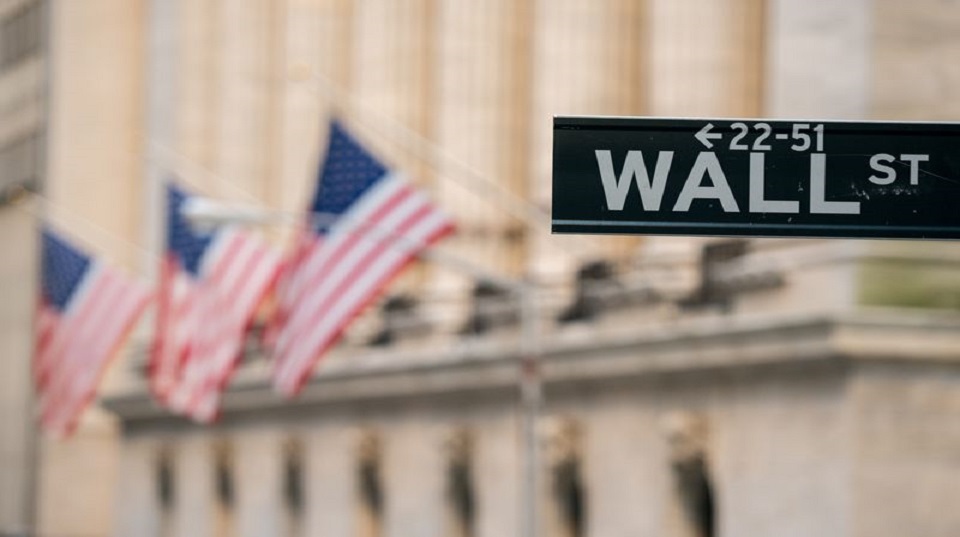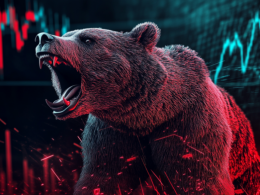by Liz Ann Sonders, Senior Vice President, Chief Investment Strategist, Charles Schwab & Co
Key Points
- Ongoing battles, including trade, Fed vs market, Fed vs politicians, slowdown vs. recession, bonds vs. stocks, and bulls vs. bears may continue to drive volatility.
- Recession risk is rising, but keeping it at bay could mean rate cut(s) lead to a stronger stock market based on history.
- Leading indicators’ rate of change rolled over last September, suggesting slower growth ahead.
As we look ahead to this year’s second half, we need to assess the stage and impact of myriad battles underway: the United States vs. China, the market vs. the Federal Reserve, President Trump vs the Fed, recession vs. slowdown, and the stock market vs. the bond market.

Will Fed take out “insurance policy” due to trade war?
I started in this business 33 years ago, working for the late-great Marty Zweig. He was well-known for myriad research innovations and prognostications; but paramount among them might be his coining of the phrase, “Don’t fight the Fed.” Even Marty would concede it’s never as simple as that when it comes to market behavior and monetary policy, but the notion is worth considering as we exit this year’s first half and look ahead to the second half.
[backc url='https://www.dynamic.ca/leadership/eng/active.html#pools?video=pools&utm_source=aa&utm_medium=edirect&utm_campaign=alwayson&utm_content=activepools_pools']I often wonder what Marty would be thinking today; with the market’s perspective on the path for interest rates representing a still-wide gap relative to the Fed’s own expectations. Perhaps a more apt phrase this time is, “Hey Fed, don’t fight the market.” Will the Fed opt to fight political pressure? Or will the Fed opt to take out an “insurance policy” to combat the prospective hit to the economy from the ongoing trade war between the United States and China? Regardless of when the Fed opts to begin cutting rates, we are currently in the longest stretch in at least 50 years without a rate cut.
The June Federal Open Market Committee (FOMC) meeting gave markets what they were expecting; which was no change to rates, but the removal of the key word “patient” in the statement, and firmly putting a July rate cut on the table. Ultimately, if the Fed cuts rates in July or some other meeting(s) in the second half of the year, the action by the stock market in the subsequent period will likely rest on whether we are heading into an economic recession.
As you can see in the chart below, initial rate cuts when no recession was underway or imminent were historically accompanied by stronger stock market performance over the subsequent year relative to recession periods. For those of you surprised that the path for stocks around recession periods was lower but still up, notice there was typically weakness leading into the initial rate cut (in keeping with the leading nature of the stock market).
Recessions Matter

Source: Charles Schwab, Ned Davis Research (NDR), Inc. (Further distribution prohibited without prior permission. Copyright 2019(c) Ned Davis Research, Inc. All rights reserved.). May 5, 1920-September 18, 2008. DJIA=Dow Jones Industrial Average. Recession cases: 1921, 1924, 1926, 1927, 1929, 1932, 1954, 1957, 1960, 1970, 1974, 1980, 1981, 2001, 2007. No recession cases: 1933, 1967, 1968, 1971, 1984, 1989, 1995, 1998.
Unless there is a noticeable deterioration in economic data between now and the end of July, when the FOMC next meets, a rate cut would likely be characterized as an “insurance cut,” to combat prospective economic weakness from the trade war (assuming a comprehensive trade deal isn’t reached in/around the G20 meeting). Still-low inflation would also likely be pointed to as a rationale for lower rates.
Specific to the trade war, the publishing of this report pre-dates the G20 meeting, but I’ll go under the assumption a comprehensive deal is not imminent; but that the next round of tariffs on Chinese imports is also not imminent. As you can see in the tables below, not only has the direct hit to the U.S. economy elevated with each additional set of tariffs; the next round would not only exacerbate that impact, but hit consumer goods more directly.
Economic Impact of Tariffs

Source: Charles Schwab, Cornerstone Macro.
Compositions of U.S Imports from China

Source: Charles Schwab, Cornerstone Macro. Compositions subject to section 301 tariffs.
Fed trading places
The rapidity with which the Fed shifted from a hawkish to a dovish stance has been remarkable. Following the near-bear market in last year’s fourth quarter and the same-period tightening of financial conditions, the Fed moved from hiking rates in December 2018, to a more “patient” stance in January, to signaling possible rate cuts starting next month. The shift was driven by falling inflation expectations, but also a severe weakening in global economic growth amid trade and tariffs tribulations.
Deal or no deal
Impairments to global trade cause serious disruptions to the global economy. Earlier in the year there were widespread hopes that a deal would be reached between the United States and China. However, when the Trump administration upped the ante in May by raising tariffs (which are paid by U.S. importers) to 25% on $200 billion in Chinese imports—as well as going directly after China’s Huawei—the idea that the U.S. economy would remain immune was squashed.
At this stage, the immunity argument has given way to an argument that looser Fed policy will be a sufficient offset to trade-related economic weakness. To date, the escalation in the trade war has hit the economy on both the import and export side. Both have declined from double-digit year/year growth rates last fall to no growth currently (U.S Department of Commerce).
Yes, weakness in both imports and exports can offset each other, helping limit the impact on overall U.S. gross domestic product (GDP). However, the impact is also felt through the disruption in integrated global supply chains, production disruptions (having an employment effect), higher operating costs, misallocation of resources, and weaker profit margins and/or higher consumer prices (they’re related as companies can choose whether to absorb higher tariff costs or pass them on to their customers).
The trade war has already had an impact on larger company business confidence, which is likely to continue to put downward pressure on capital spending in the second half, as you can see in the first chart below. The second chart looks more broadly at economic policy uncertainty, which has historically had a direct impact on capital spending and economic growth—and has spent a heck of a lot of time in high territory over the past decade.
CEO Confidence Naturally Leads Capex

Source: Charles Schwab, Bureau of Economic Analysis, FactSet, Ned Davis Research (NDR), Inc. (Further distribution prohibited without prior permission. Copyright 2019(c) Ned Davis Research, Inc. All rights reserved.), The Conference Board, as of March 31, 2019.
Era of Higher Economic Policy Uncertainty

Source: Charles Schwab, 'Measuring Economic Policy Uncertainty' by Scott Baker, Nicholas Bloom and Steven J. Davis at www.PolicyUncertainty.com, as of May 31, 2019.

Source: Charles Schwab, Ned Davis Research (NDR), Inc. (Further distribution prohibited without prior permission. Copyright 2019(c) Ned Davis Research, Inc. All rights reserved.).
Earnings recession risk rising
The aforementioned possible hit to profit margins is part of the reason for the significant fall-off in earnings estimates for S&P 500 companies since the tax cut-related boost last year. From a growth rate of more than 20% in 2018, estimates are for barely any growth in the second and third quarters, and only a slight lift in the fourth quarter (see the chart below). However, most analysts concede that estimating the future impact of the trade war—which probably requires a Twitter crystal ball—is too difficult to accurately reflect in forward estimates. This means that if the trade war continues to escalate, earnings estimates may have to be cut more significantly; meaning an earnings recession becomes a distinct possibility.
Earnings Bloom Off the 2018 Rose

Source: Charles Schwab, I/B/E/S data from Refinitiv, as of June 19, 2019.
Economic recession risk rising, too
The trade war and the related slowdown in world trade and global growth have contributed to rising recession risk. Adding to that pressure is the inverted yield curve. The yield spread most observed is between the 10-year Treasury note and the 3-month Treasury bill; which has been in inverted territory for about a month as of this writing. In addition, the Fed did a study about a year ago showing that the “near-term forward spread” (between the forward six quarter expectation of the 3-month Treasury bill yield and the current 3-month Treasury bill yield) is most predictive of recessions. Its inversion has been more persistent this year, as you can see in the chart below.
Yield Curve Inversion(s) Sending Recession Risk Warning

Source: Charles Schwab, Bloomberg, Federal Reserve Bank of New York, as of June 19, 2019. The near-term forward spread is the difference between current 3-month yields and the implied forward 3-month yield 18 months from now.
The yield curve is the primary indicator that makes up the New York Fed’s Recession Probability Model, which shows elevated recession risk as we head into this year’s second half. That is the message the bond market is sending—flying in the face of a more optimistic message from the stock market. For what it’s worth, the bond market has generally “called” recessions before the stock market.
Recession Risk Rising

Source: Charles Schwab, Federal Reserve Bank of New York, as of May 31, 2019. Model uses difference between 10-year and 3-month Treasury rates to calculate probability of a recession 12 months ahead.
What do the leading indicators say?
An outlook report wouldn’t be complete without a look at the leading economic indicators to glean what they say about the future. After three consecutive increases, The Conference Board’s Leading Economic Index (LEI) was unchanged in May. Limited headway has been made in the leading indicators’ level since last September; and as you can see in the chart below, the year-over-year change has been in decline since then, although not yet signaling elevated recession risk.
LEI’s Trend Continues to Weaken

Source: Charles Schwab, FactSet, The Conference Board, as of May 31, 2019.
The reason why I show the change in the LEI vs. its level is a function of one of the most important lessons investors should heed: When it comes to the relationship between economic data and the stocks market, better or worse tends to matter more than good or bad. As such, it’s why when I look at and show the breakdown of the LEI’s 10 components, I show both their levels and their trends. As you can see, there is more red in the “trend” column than there is in the “level” column.

Source: Charles Schwab, FactSet, The Conference Board, as of May 31, 2019.
Tactical positioning
We continue to recommend that investors keep their U.S. equity allocations no higher than their long-term strategic allocations—in other words, we continue to have a “neutral” tactical recommendation. However, we also continue to recommend that investors keep a bias toward (“overweight”) large cap stocks at the expense of small cap stocks (“underweight”). Not only do large caps tend to outperform small caps during the latter stage of an economic cycle, small caps are also pressured by higher debt ratios, fewer profitable companies, a higher percentage of “zombie” companies, and less agility for repositioning associated with the trade war.
In sum
New market highs are always worth cheering, but keep in mind the limited movement overall in U.S. stocks over the course of the past 18 months. If a recession is coming, we will likely look back at this period as part of a topping process for stocks (tops generally are processes over time; bottoms are typically more V-shaped moments in time). Aside from ongoing trade war uncertainty, our other concern is the possibility that the market has gotten ahead of the Fed. With fed funds future now discounting more than 100 basis points of easing by the end of next year, equities may be at risk if the economy’s deterioration supports that much easing; but also at risk if the Fed under-delivers. If the economy hangs in there and rate cuts are simply insurance cuts, the additional accommodation could be a sufficient offset to the negative effects of the trade war.
Copyright © Charles Schwab & Co














